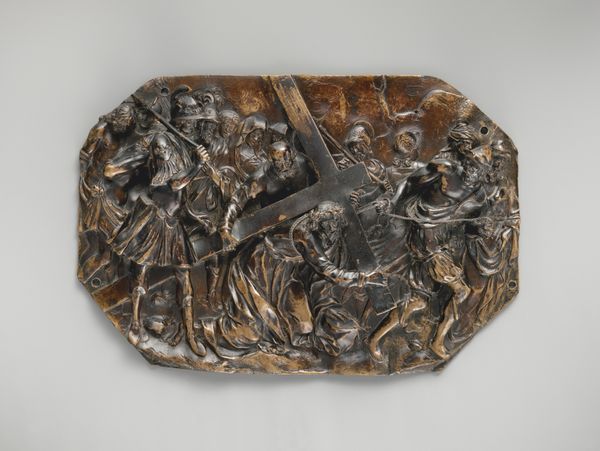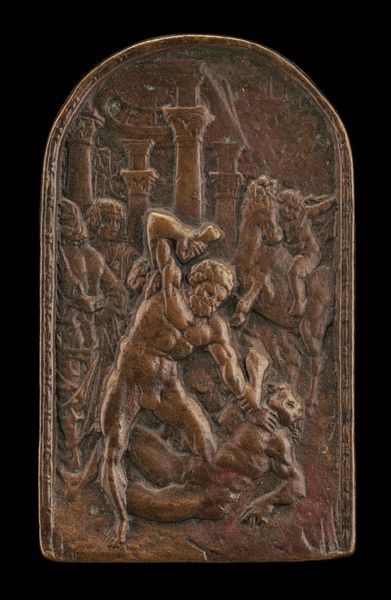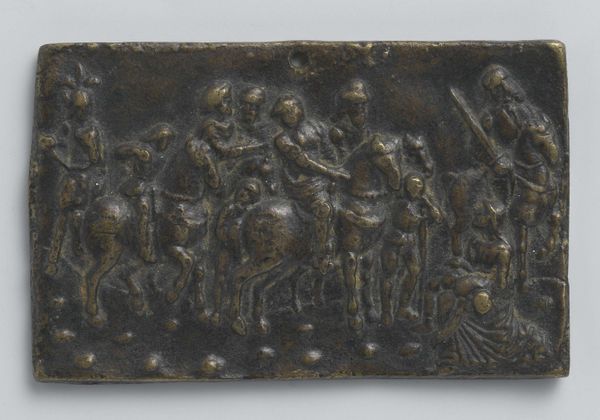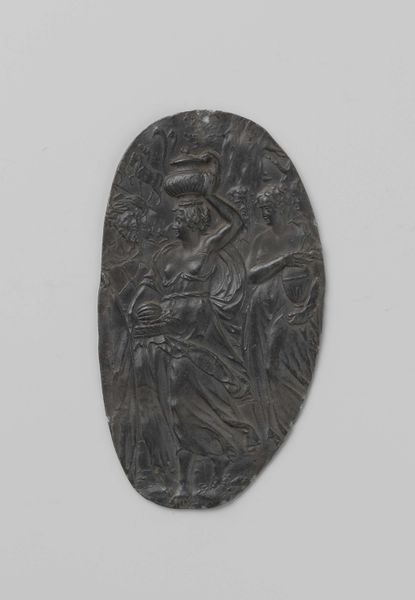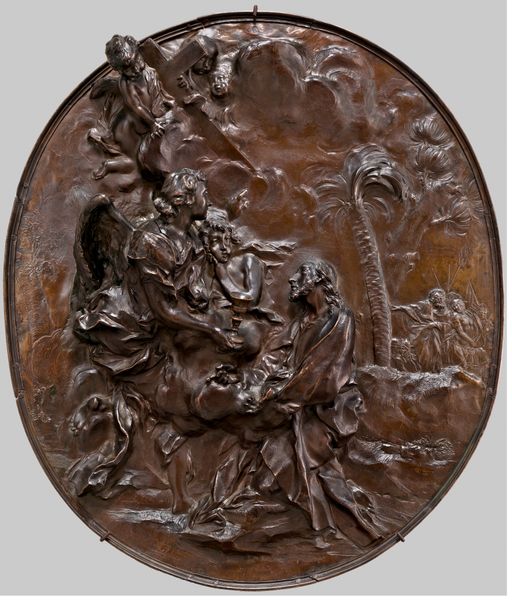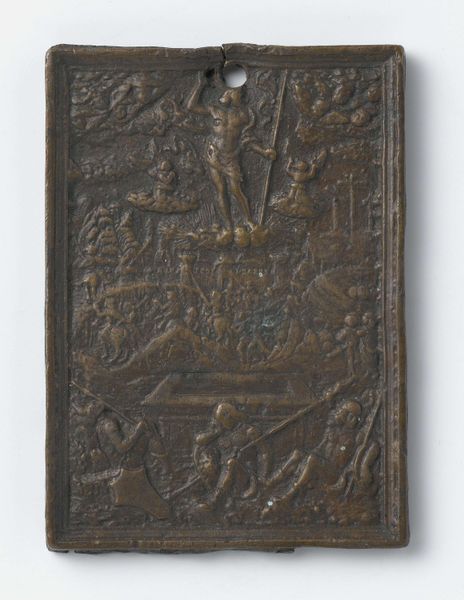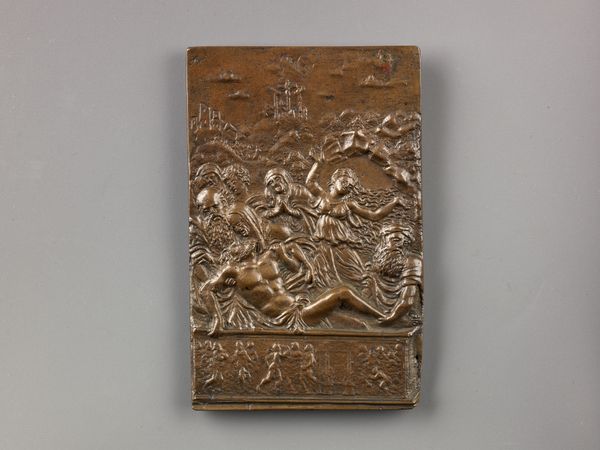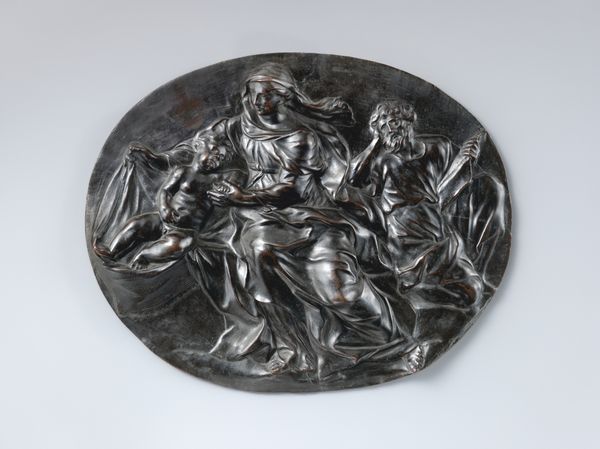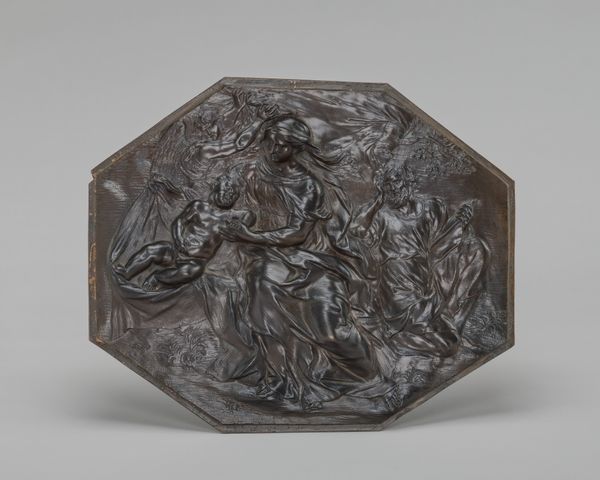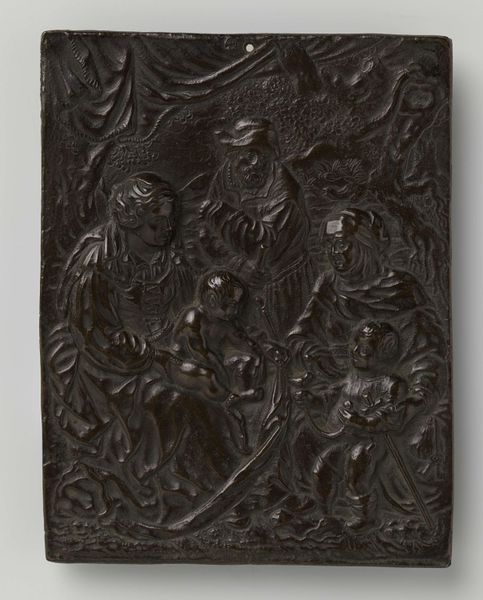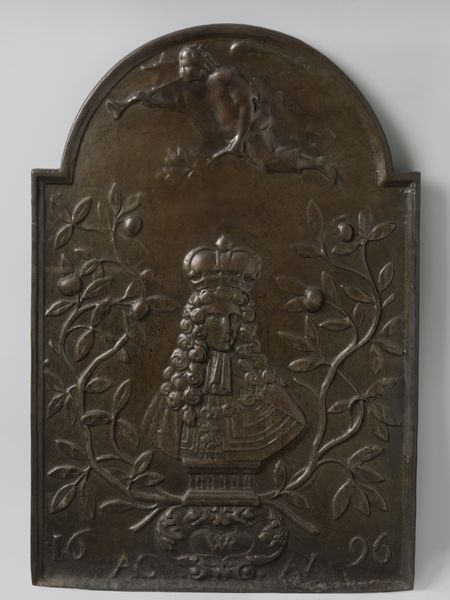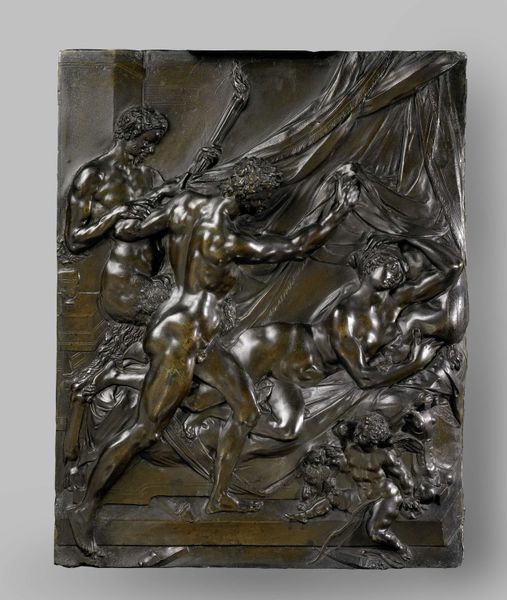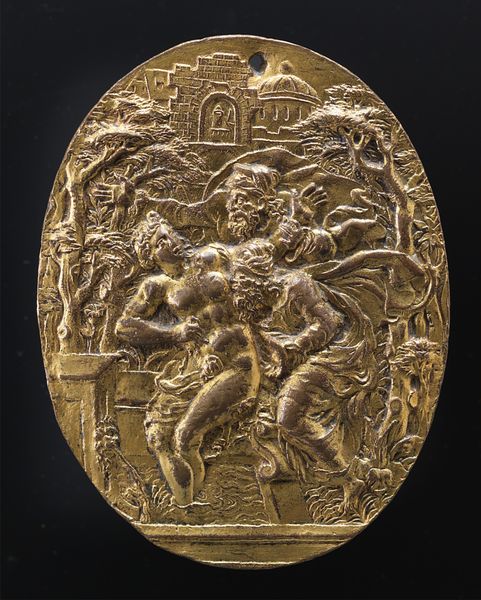
Banquet of the gods 1500 - 1700
0:00
0:00
relief, bronze, sculpture
#
sculpture
#
textured
#
detailed texture
#
relief
#
bronze
#
figuration
#
11_renaissance
#
sculpture
#
men
#
history-painting
#
decorative-art
#
italian-renaissance
Dimensions: 15 × 9 3/8 in. (38.1 × 23.8 cm)
Copyright: Public Domain
Editor: This bronze relief, "Banquet of the Gods," thought to be from the period between 1500 and 1700, is currently held at The Met. It is amazing how densely packed this sculpture is. All of the figures seem to be fighting for space. How do you see this piece and how it was received during the Italian Renaissance? Curator: It's interesting you note the density, because these banquet scenes served important cultural functions. It acted as a spectacle of power. We must think about its original placement – perhaps in a palazzo – and its reception by invited guests or the noble families. The bronze material itself signifies wealth and status, so this isn’t simply a representation of a mythical scene; it's a display of earthly power projected onto the divine. Does knowing that change how you read it? Editor: Definitely! I initially thought of it in purely artistic terms, about aesthetics and composition, and its connection with mythology. But you are right. Its presence within the household signifies it as so much more! I wonder about how the patrons thought to use classical references to strengthen their own power. Did viewers at the time read these figures in a similar way? Curator: We have to consider the learned elite. These wealthy merchant or aristocratic families used that kind of art as part of their power statements. Knowledge of classical mythology, access to art like this—it all reinforced their positions within the existing social hierarchies. Did you notice that the scene is teeming with men and how they are almost without any women? Editor: Yes, that is a strong element I had glanced over! I had presumed that perhaps all Gods are inherently male! But that does bring it back to its placement within an exclusive setting… How different it might have felt in its time compared to now when any museum goer can freely gaze upon it! Curator: Exactly! It moves us from the purely aesthetic to a critical engagement with art's function in society, both past and present. Thanks to how the piece is constructed, as a layered relief, with depth within the imagery, we should see how depth extends towards society too! Editor: Thanks so much for unpacking all of those historical and social contexts. It certainly gives me a deeper appreciation for "Banquet of the Gods" as more than just a decorative sculpture. It helps understand how to bring its rich setting and meaning to those looking to visit the Met!
Comments
No comments
Be the first to comment and join the conversation on the ultimate creative platform.
